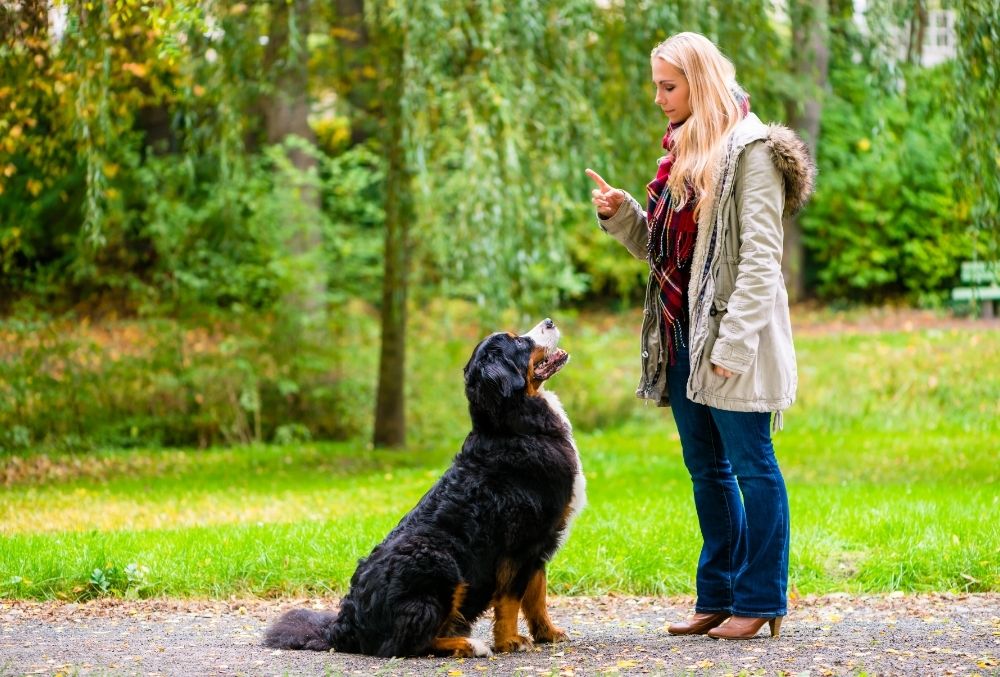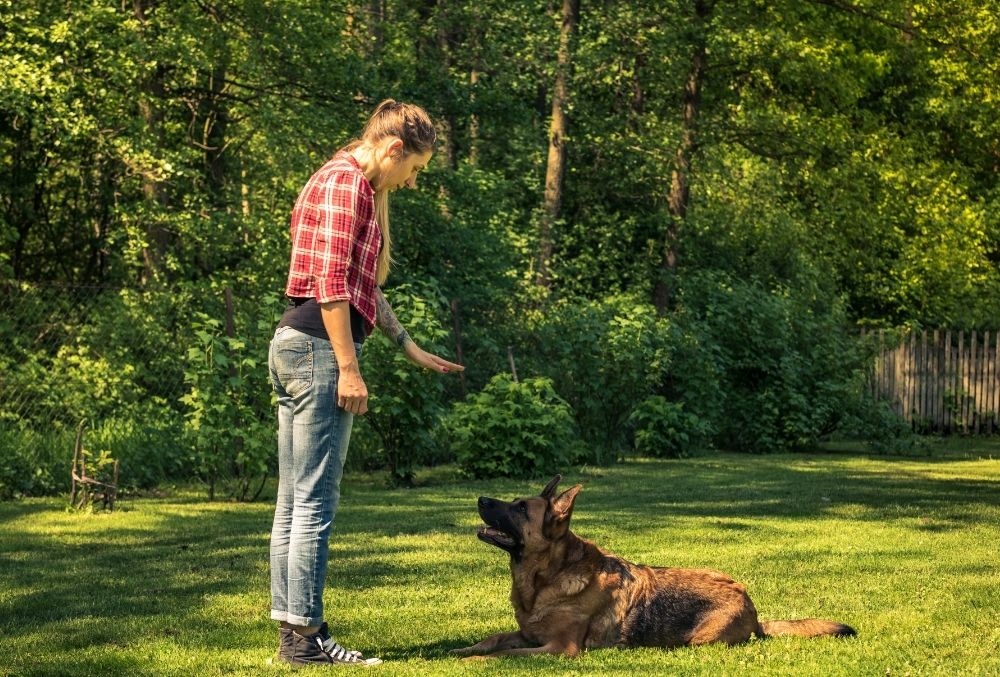This post may contain affiliate links. Please read my disclaimer policy
Having a dog can be a lot of fun, but those initial stages where you have to train them can be such a challenge. Puppy or dog training takes months of consistent work, with lots of repetitions, rewards and patience, but it all pays off in the end, when you have a canine companion that you can trust and depend on.
In order to properly train your dog, you need to know all of the best commands to use, which methods to try and which order to teach your dog the commands. Luckily, this guide will answer all of your questions!
Contents
Why You Should Train A Dog
Training a dog is essential to their wellbeing. Despite what you may have heard, you can train a dog at any age, and you can teach them new tricks. It’s just easier to implement training as early on as possible, so that you can keep your dog happy, safe and healthy.
For a dog, training can build confidence, strengthen the bond between you, and keep them mentally stimulated, with something to do upon command. Training is particularly useful if you have a dog with high energy levels, or one with anxiety issues, as it can give them a sense of purpose and accomplishment.
In addition to this, training can help mold your dog into the pet that you want, banishing undesirable behaviors and praising good behaviors. That being said, typical ‘bad behaviors’ are simply natural dog behaviors such as chewing, defecating wherever they want or digging in the garden. However, these behaviors are inappropriate for a domesticated dog, and so we must train and guide them in the right direction.
With training, a dog can learn which behaviors result in rewards, and which do not, you just have to be consistent with your commands, rewards and actions.
To train a dog, you will need to use positive reinforcement, simple commands, praise and consistency. You should never punish a dog for poor behavior, but reward good, positive behavior with tasty treats and affection. So, which commands are essential for your dog to learn?
Which Commands Should You Teach A Dog

As mentioned above, training your dog is essential not only for their wellbeing, but for their safety as well. A trained dog will also make your life so much easier, and you will have a more enjoyable, stronger relationship with your dog.
There are a range of commands that you can teach your dog, from Sit, to Stay, Wait, Down, and No, which can keep your dog safe and obedient, to more fun commands such as Paw, or Spin and Roll Over.
We would recommend that you focus on the essential commands first, and leave the more fun, advanced commands for a little further down the line. The best commands to teach your dog are Sit, Down, Stay, No, Heel, and Come.
These are best for beginning your training journey, as they are simpler commands, but can help you learn to control your dog, keep them safe and help them walk comfortably on a lead. So, which is the best order to teach dog commands?
Best Order To Teach Dog Commands
If you know which order is best to teach dog commands, you can make it much easier for you and your dog to learn them quickly. The best command to start with is Sit, as this can come naturally to a dog, and they will pick it up quickly.
Sit
To teach your dog to sit, you’ll only need a few tasty treats to help them learn the concept. You will need to take a tasty treat, and hold it in your hand, near their nose. Keeping it in that place, you’ll need to move your hand over your dog’s head, and they will try to follow it with their eyes.
Then, as the treat is over the head, your dog should naturally fall into a sitting position. When they do sit, give them the treat as a reward. Once your dog has mastered the sit, you can move onto other training commands.
Down
The next command to teach your dog is ‘down’ as this can help control your dog if needed. When in a sitting position, your dog is able to dart anywhere at any point, but when they are lying down, it is much harder for them to get up and run without you stopping them.

To teach your dog the ‘down’ command, you will need to have them in a sitting position. Then, with a treat in your hand, move your hand from the nose, down to the chest, and then straight down towards the floor.
Your dog should naturally follow the treat and get into a down position, so praise them when they do this, and give the treat immediately. Repeat the process a few times until your dog grasps the command, and then when your dog lies down naturally, give them some treats to encourage them to stay in that position.
Stay
Once your dog has mastered the Sit, and Down commands, it’s time to teach them to Stay. This is an essential command to teach your dog, as it can keep them safe, when learning to cross the street, or it can prevent them from running out of the front door and escaping onto the road.
To teach a dog to stay, you will need to get them to sit or lie down first, then choose a hand signal that you will use. We recommend using a stop palm sign facing your dog. Then, with treats at the ready, you will need to ask your dog to stay, before waiting a few seconds, and then rewarding.
You should only be rewarding the dog if your dog is lying down or in a calm position. You can then increase the time the dog has to wait or stay, and increase the distance between you and your dog as your pet progresses with this command.
Come
The next step is to teach your dog to come. This is vital if you want to walk your dog off leash, or if they break free of your backyard, as you need them to come back as soon as you call. It is best to teach Come after Stay, as this can help you call them off their place when they are waiting, so they can learn both easily and quickly.
To teach your dog to come, you will once again need tasty treats, or a toy to encourage them to come. Show your dog that you have this toy, and run a few paces away from them, before calling them with ‘Come’ in a nice, friendly, and encouraging manner. Then, as they get to you, hold the collar and give the treat or toy.
Then, keep doing this, but increase the distance between you and your dog so that they come to you when called every time. You can also try this method by having someone hold the collar whilst you walk away, and say ‘come’, before the person releases the collar.
Praise every single time, and increase the distance as your dog gets better at it.
Heel
Finally, we have the heel command. This is perfect for teaching your dog to walk nicely on a lead, and calmly by your side rather than pulling or lunging forward. To teach your dog to heel, you will need to start by walking around the house or in a spacious room. Then call your dog’s name and point to the side you want them to walk on.
When your dog is in place, say yes and reward them. Keep repeating this, by pointing to the side, and rewarding when in position. Then increase the distance, and your pace, ensuring he stays in position, before rewarding.
Final Thoughts
To conclude, training your dog is essential, as it keeps them obedient, safe and mentally stimulated. Training should start slowly, and you should only move onto a new command when you are confident that your dog can achieve the previous one with ease. For the best results, you should start off with sit, before moving on to down, stay, come, and heel.

